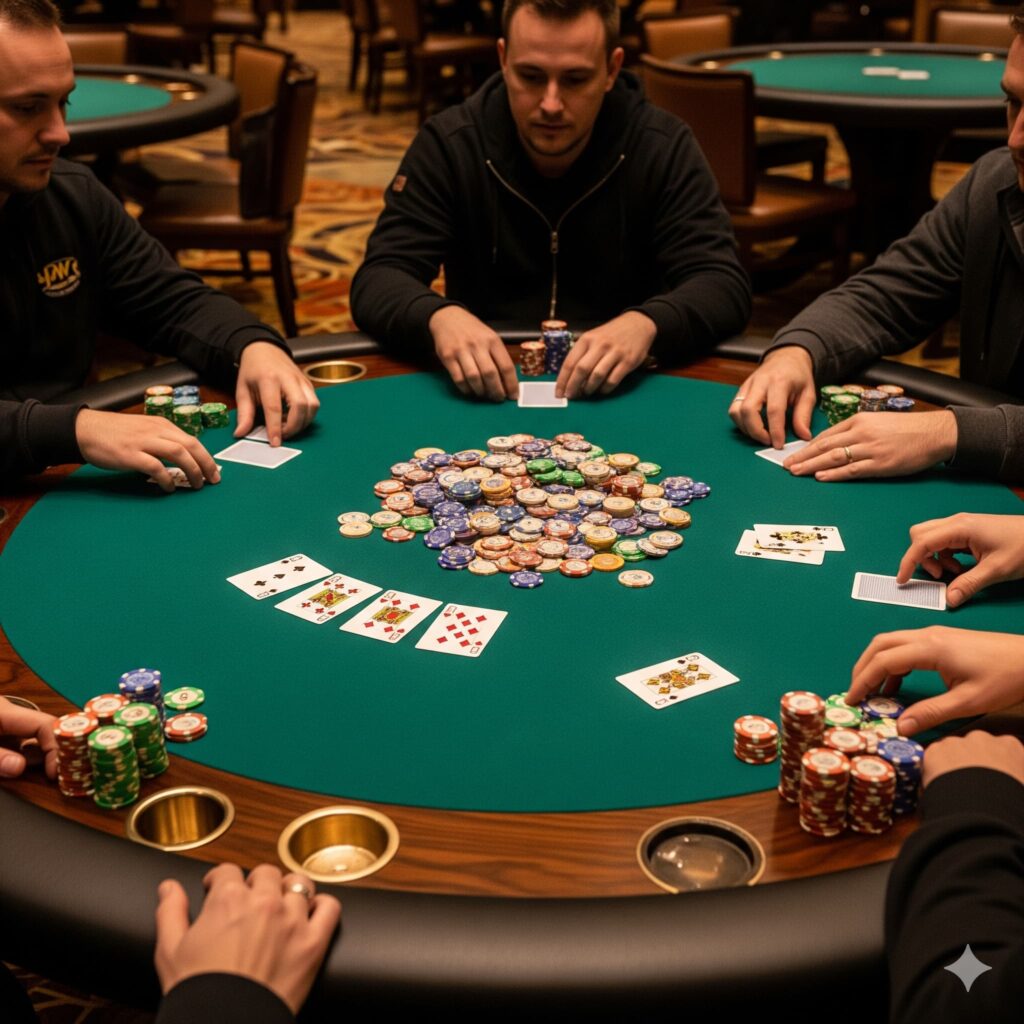Multiway pots are one of the most complex and misunderstood areas of No-Limit Hold’em. According to a recent video from GTOWizard, it’s in these spots where most players “punt” or make significant strategic errors. However, these common mistakes create massive opportunities for studied players who know how to identify and exploit them.
This article breaks down why multiway pots are so tricky and introduces powerful new tools that can help you stop punting and start profiting.

Why We Make Mistakes in Multiway Pots
The core reason players err in multiway pots is that their strategies deviate significantly from Game Theory Optimal (GTO) play. This gap between perception and reality is a goldmine for those willing to study. Here are the key reasons for these deviations:
- GTO is Tighter Than You Think: Optimal strategies in multiway pots are “way tighter than you think”. Players frequently enter the pot with ranges that are far too wide compared to the Nash equilibrium, especially when there are cold callers.
- Reluctance to Check Strong Hands: GTO solutions often recommend checking 100% of your range, even with hands as strong as top pair or trips, particularly when you are out of position against two other players. This is because your equity, expected value (EV), and equity realization can be much lower than they appear. In real games, however, most players can’t resist betting their strong holdings aggressively.
- Difficulty Folding Big Hands: Players find it incredibly difficult to let go of strong hands like trips. Yet, a solver will often identify these situations as a “slam dunk fold” because of the strength of your opponents’ ranges when facing big bets in a multiway scenario.
- Unexplored Territory: Multiway spots have been called “the next great frontier of unexplored poker theory”. This general lack of deep theoretical understanding across the player pool contributes to the frequency and severity of mistakes.
How to Fix Your Multiway Leaks and Exploit Others
The path to correcting these errors involves understanding optimal play and then learning how to deviate from it to exploit the predictable mistakes of others. GTOWizard has introduced features specifically designed for this purpose.
Master the Theory with Multiway Solving
To gain an edge, you first need to understand the baseline GTO strategy.
- The platform now provides custom three-way post-flop solutions for any combination of ranges, stack sizes, and bet sizes.
- Studying these solutions highlights just how far typical player strategies deviate from optimal play, which can provide a “big edge”.
Exploit Your Opponents with Node Locking 2.0
Once you understand the GTO foundation, you can begin crafting exploitative strategies with Node Locking 2.0, which features a redesigned interface and a smarter locking algorithm. This tool allows you to plug in assumptions about your opponents to find the perfect counter-strategy.
Here’s how it works:
- Adjust Opponent Ranges: You can modify an opponent’s pre-flop range to reflect their real-world tendencies, which are often wider than GTO suggests. This can be done with a simple slider, by selecting wider position formations (e.g., modeling an Under the Gun player with a Button range), or by manually adjusting hand frequencies.
- Lock Strategic Frequencies: You can model specific player types by forcing them to take certain actions at a set frequency.
- Range Frequency Locking: Force a player’s entire range to take an action a certain percentage of the time (e.g., force a player to bet 60% of the time to model an aggressive opponent). The solver then finds the “least exploitable way” to play against that tendency.
- Hand Frequency Locking: Get even more specific by locking actions for individual hands or hand classes. For example, you can force an opponent to always bet with their trips, modeling a common player mistake.
By inputting your assumptions about an opponent’s strategy, you can see how different plays become justified or exploitable. This process is like an artist painting a picture of an opponent’s range based on reads and tendencies. By using these tools, you can turn spots where others frequently punt into your most profitable opportunities.
